Mathieu Salzmann
CVLab EPFL Switzerland
Learning to Weight Parameters for Data Attribution
Jun 06, 2025Abstract:We study data attribution in generative models, aiming to identify which training examples most influence a given output. Existing methods achieve this by tracing gradients back to training data. However, they typically treat all network parameters uniformly, ignoring the fact that different layers encode different types of information and may thus draw information differently from the training set. We propose a method that models this by learning parameter importance weights tailored for attribution, without requiring labeled data. This allows the attribution process to adapt to the structure of the model, capturing which training examples contribute to specific semantic aspects of an output, such as subject, style, or background. Our method improves attribution accuracy across diffusion models and enables fine-grained insights into how outputs borrow from training data.
Demystifying Singular Defects in Large Language Models
Feb 10, 2025Abstract:Large transformer models are known to produce high-norm tokens. In vision transformers (ViTs), such tokens have been mathematically modeled through the singular vectors of the linear approximations of layers. However, in large language models (LLMs), the underlying causes of high-norm tokens remain largely unexplored, and their different properties from those of ViTs require a new analysis framework. In this paper, we provide both theoretical insights and empirical validation across a range of recent models, leading to the following observations: i) The layer-wise singular direction predicts the abrupt explosion of token norms in LLMs. ii) The negative eigenvalues of a layer explain its sudden decay. iii) The computational pathways leading to high-norm tokens differ between initial and noninitial tokens. iv) High-norm tokens are triggered by the right leading singular vector of the matrix approximating the corresponding modules. We showcase two practical applications of these findings: the improvement of quantization schemes and the design of LLM signatures. Our findings not only advance the understanding of singular defects in LLMs but also open new avenues for their application. We expect that this work will stimulate further research into the internal mechanisms of LLMs and will therefore publicly release our code.
MotionMap: Representing Multimodality in Human Pose Forecasting
Dec 25, 2024Abstract:Human pose forecasting is inherently multimodal since multiple futures exist for an observed pose sequence. However, evaluating multimodality is challenging since the task is ill-posed. Therefore, we first propose an alternative paradigm to make the task well-posed. Next, while state-of-the-art methods predict multimodality, this requires oversampling a large volume of predictions. This raises key questions: (1) Can we capture multimodality by efficiently sampling a smaller number of predictions? (2) Subsequently, which of the predicted futures is more likely for an observed pose sequence? We address these questions with MotionMap, a simple yet effective heatmap based representation for multimodality. We extend heatmaps to represent a spatial distribution over the space of all possible motions, where different local maxima correspond to different forecasts for a given observation. MotionMap can capture a variable number of modes per observation and provide confidence measures for different modes. Further, MotionMap allows us to introduce the notion of uncertainty and controllability over the forecasted pose sequence. Finally, MotionMap captures rare modes that are non-trivial to evaluate yet critical for safety. We support our claims through multiple qualitative and quantitative experiments using popular 3D human pose datasets: Human3.6M and AMASS, highlighting the strengths and limitations of our proposed method. Project Page: https://www.epfl.ch/labs/vita/research/prediction/motionmap/
GEM: A Generalizable Ego-Vision Multimodal World Model for Fine-Grained Ego-Motion, Object Dynamics, and Scene Composition Control
Dec 15, 2024



Abstract:We present GEM, a Generalizable Ego-vision Multimodal world model that predicts future frames using a reference frame, sparse features, human poses, and ego-trajectories. Hence, our model has precise control over object dynamics, ego-agent motion and human poses. GEM generates paired RGB and depth outputs for richer spatial understanding. We introduce autoregressive noise schedules to enable stable long-horizon generations. Our dataset is comprised of 4000+ hours of multimodal data across domains like autonomous driving, egocentric human activities, and drone flights. Pseudo-labels are used to get depth maps, ego-trajectories, and human poses. We use a comprehensive evaluation framework, including a new Control of Object Manipulation (COM) metric, to assess controllability. Experiments show GEM excels at generating diverse, controllable scenarios and temporal consistency over long generations. Code, models, and datasets are fully open-sourced.
Temporally Compressed 3D Gaussian Splatting for Dynamic Scenes
Dec 07, 2024Abstract:Recent advancements in high-fidelity dynamic scene reconstruction have leveraged dynamic 3D Gaussians and 4D Gaussian Splatting for realistic scene representation. However, to make these methods viable for real-time applications such as AR/VR, gaming, and rendering on low-power devices, substantial reductions in memory usage and improvements in rendering efficiency are required. While many state-of-the-art methods prioritize lightweight implementations, they struggle in handling scenes with complex motions or long sequences. In this work, we introduce Temporally Compressed 3D Gaussian Splatting (TC3DGS), a novel technique designed specifically to effectively compress dynamic 3D Gaussian representations. TC3DGS selectively prunes Gaussians based on their temporal relevance and employs gradient-aware mixed-precision quantization to dynamically compress Gaussian parameters. It additionally relies on a variation of the Ramer-Douglas-Peucker algorithm in a post-processing step to further reduce storage by interpolating Gaussian trajectories across frames. Our experiments across multiple datasets demonstrate that TC3DGS achieves up to 67$\times$ compression with minimal or no degradation in visual quality.
Enhancing Compositional Text-to-Image Generation with Reliable Random Seeds
Dec 02, 2024Abstract:Text-to-image diffusion models have demonstrated remarkable capability in generating realistic images from arbitrary text prompts. However, they often produce inconsistent results for compositional prompts such as "two dogs" or "a penguin on the right of a bowl". Understanding these inconsistencies is crucial for reliable image generation. In this paper, we highlight the significant role of initial noise in these inconsistencies, where certain noise patterns are more reliable for compositional prompts than others. Our analyses reveal that different initial random seeds tend to guide the model to place objects in distinct image areas, potentially adhering to specific patterns of camera angles and image composition associated with the seed. To improve the model's compositional ability, we propose a method for mining these reliable cases, resulting in a curated training set of generated images without requiring any manual annotation. By fine-tuning text-to-image models on these generated images, we significantly enhance their compositional capabilities. For numerical composition, we observe relative increases of 29.3% and 19.5% for Stable Diffusion and PixArt-{\alpha}, respectively. Spatial composition sees even larger gains, with 60.7% for Stable Diffusion and 21.1% for PixArt-{\alpha}.
Generalize or Detect? Towards Robust Semantic Segmentation Under Multiple Distribution Shifts
Nov 06, 2024
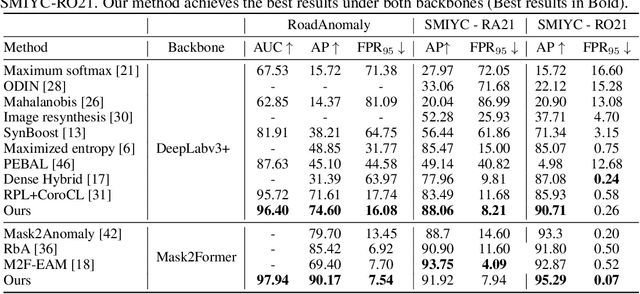
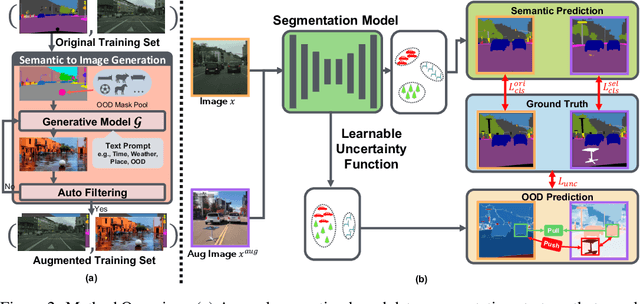
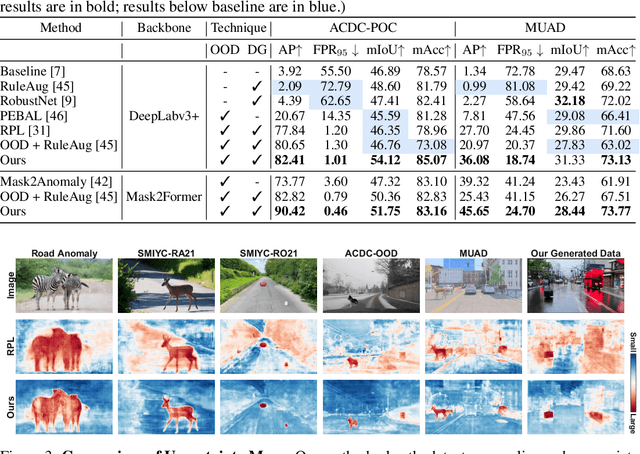
Abstract:In open-world scenarios, where both novel classes and domains may exist, an ideal segmentation model should detect anomaly classes for safety and generalize to new domains. However, existing methods often struggle to distinguish between domain-level and semantic-level distribution shifts, leading to poor out-of-distribution (OOD) detection or domain generalization performance. In this work, we aim to equip the model to generalize effectively to covariate-shift regions while precisely identifying semantic-shift regions. To achieve this, we design a novel generative augmentation method to produce coherent images that incorporate both anomaly (or novel) objects and various covariate shifts at both image and object levels. Furthermore, we introduce a training strategy that recalibrates uncertainty specifically for semantic shifts and enhances the feature extractor to align features associated with domain shifts. We validate the effectiveness of our method across benchmarks featuring both semantic and domain shifts. Our method achieves state-of-the-art performance across all benchmarks for both OOD detection and domain generalization. Code is available at https://github.com/gaozhitong/MultiShiftSeg.
Self-Ensembling Gaussian Splatting for Few-shot Novel View Synthesis
Oct 31, 2024



Abstract:3D Gaussian Splatting (3DGS) has demonstrated remarkable effectiveness for novel view synthesis (NVS). However, the 3DGS model tends to overfit when trained with sparse posed views, limiting its generalization capacity for broader pose variations. In this paper, we alleviate the overfitting problem by introducing a self-ensembling Gaussian Splatting (SE-GS) approach. We present two Gaussian Splatting models named the $\mathbf{\Sigma}$-model and the $\mathbf{\Delta}$-model. The $\mathbf{\Sigma}$-model serves as the primary model that generates novel-view images during inference. At the training stage, the $\mathbf{\Sigma}$-model is guided away from specific local optima by an uncertainty-aware perturbing strategy. We dynamically perturb the $\mathbf{\Delta}$-model based on the uncertainties of novel-view renderings across different training steps, resulting in diverse temporal models sampled from the Gaussian parameter space without additional training costs. The geometry of the $\mathbf{\Sigma}$-model is regularized by penalizing discrepancies between the $\mathbf{\Sigma}$-model and the temporal samples. Therefore, our SE-GS conducts an effective and efficient regularization across a large number of Gaussian Splatting models, resulting in a robust ensemble, the $\mathbf{\Sigma}$-model. Experimental results on the LLFF, Mip-NeRF360, DTU, and MVImgNet datasets show that our approach improves NVS quality with few-shot training views, outperforming existing state-of-the-art methods. The code is released at https://github.com/sailor-z/SE-GS.
Unlocking Comics: The AI4VA Dataset for Visual Understanding
Oct 27, 2024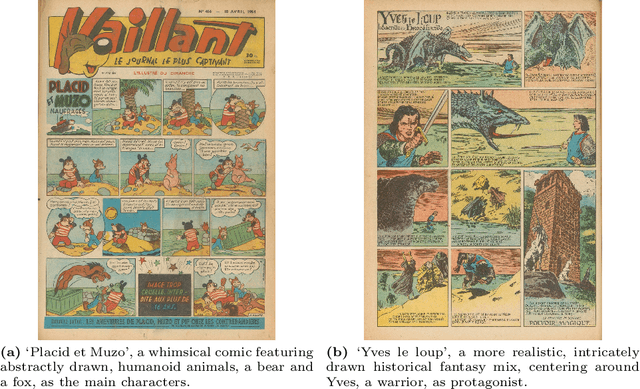
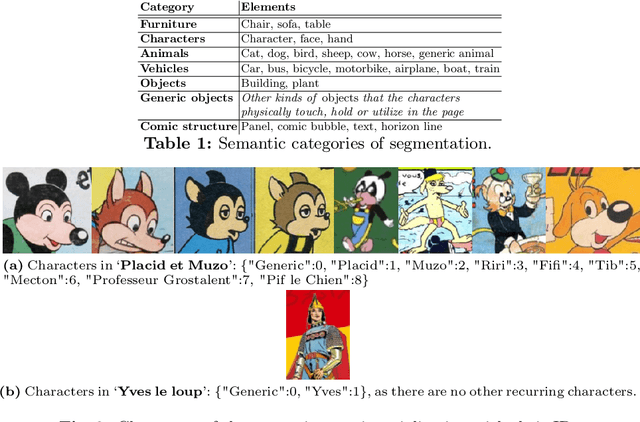
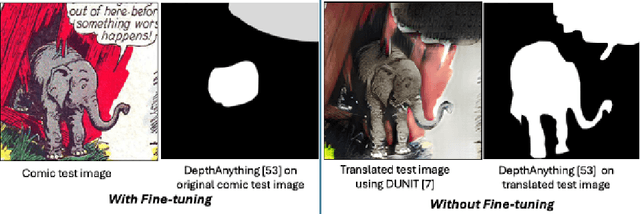

Abstract:In the evolving landscape of deep learning, there is a pressing need for more comprehensive datasets capable of training models across multiple modalities. Concurrently, in digital humanities, there is a growing demand to leverage technology for diverse media adaptation and creation, yet limited by sparse datasets due to copyright and stylistic constraints. Addressing this gap, our paper presents a novel dataset comprising Franco-Belgian comics from the 1950s annotated for tasks including depth estimation, semantic segmentation, saliency detection, and character identification. It consists of two distinct and consistent styles and incorporates object concepts and labels taken from natural images. By including such diverse information across styles, this dataset not only holds promise for computational creativity but also offers avenues for the digitization of art and storytelling innovation. This dataset is a crucial component of the AI4VA Workshop Challenges~\url{https://sites.google.com/view/ai4vaeccv2024}, where we specifically explore depth and saliency. Dataset details at \url{https://github.com/IVRL/AI4VA}.
QT-DoG: Quantization-aware Training for Domain Generalization
Oct 08, 2024



Abstract:Domain Generalization (DG) aims to train models that perform well not only on the training (source) domains but also on novel, unseen target data distributions. A key challenge in DG is preventing overfitting to source domains, which can be mitigated by finding flatter minima in the loss landscape. In this work, we propose Quantization-aware Training for Domain Generalization (QT-DoG) and demonstrate that weight quantization effectively leads to flatter minima in the loss landscape, thereby enhancing domain generalization. Unlike traditional quantization methods focused on model compression, QT-DoG exploits quantization as an implicit regularizer by inducing noise in model weights, guiding the optimization process toward flatter minima that are less sensitive to perturbations and overfitting. We provide both theoretical insights and empirical evidence demonstrating that quantization inherently encourages flatter minima, leading to better generalization across domains. Moreover, with the benefit of reducing the model size through quantization, we demonstrate that an ensemble of multiple quantized models further yields superior accuracy than the state-of-the-art DG approaches with no computational or memory overheads. Our extensive experiments demonstrate that QT-DoG generalizes across various datasets, architectures, and quantization algorithms, and can be combined with other DG methods, establishing its versatility and robustness.
 Add to Chrome
Add to Chrome Add to Firefox
Add to Firefox Add to Edge
Add to Edge